Are you ready to expand your herb garden to include new varieties but don’t have enough sun to go around? We completely understand. Not all sections of our gardens are created equal with sun exposure. However, that doesn’t mean we need to give up on planting our favorite herbs! Many herb varieties either prefer full shade or tolerate partial shade. So, feel free to add one of these herbs that grow and thrive in the shade to your garden next year!
1. Angelica
An often under-represented herb is angelica (Angelica archangelica). This spectacular flower is native to northern Europe. It grows up to six feet tall and four feet wide. This flower holds a revered status in many traditional medicinal systems. It is low-maintenance and tolerates partial shade. However, don’t eat the root! While the leaves and stems are edible, the root is poisonous.

Angelica is a beautiful flower with many medicinal applications. It also tolerates partial shade.
©alpictures/Shutterstock.com
2. Bay
Most of us have added bay leaves to soups and stews without realizing where this fascinating herb comes from. Bay (Laurus nobilis) is a Mediterranean native shrub. When left alone, it can reach upwards of sixty feet tall! It tolerates multiple soil types and partially shaded environments.
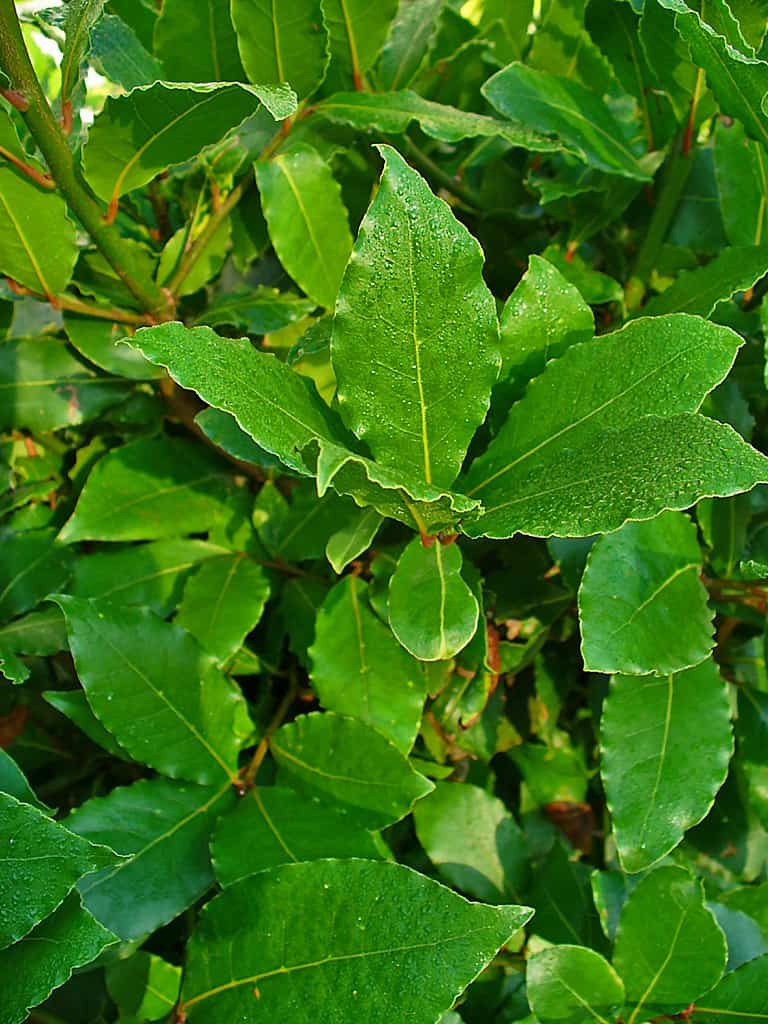
Bay leaves come from surprisingly large shrubs!
©H. Zell / CC BY-SA 3.0 – License
3. Borage
These edible flowers are a shining star in the herbal world. While they are technically annuals, since they self-seed, you may find yourself with a volunteer plant or two the following year. Borage (Borago officinalis) produces stunning, delicate blue flowers that pollinators adore. It thrives in all types of soil and anywhere from full sun to partial shade.
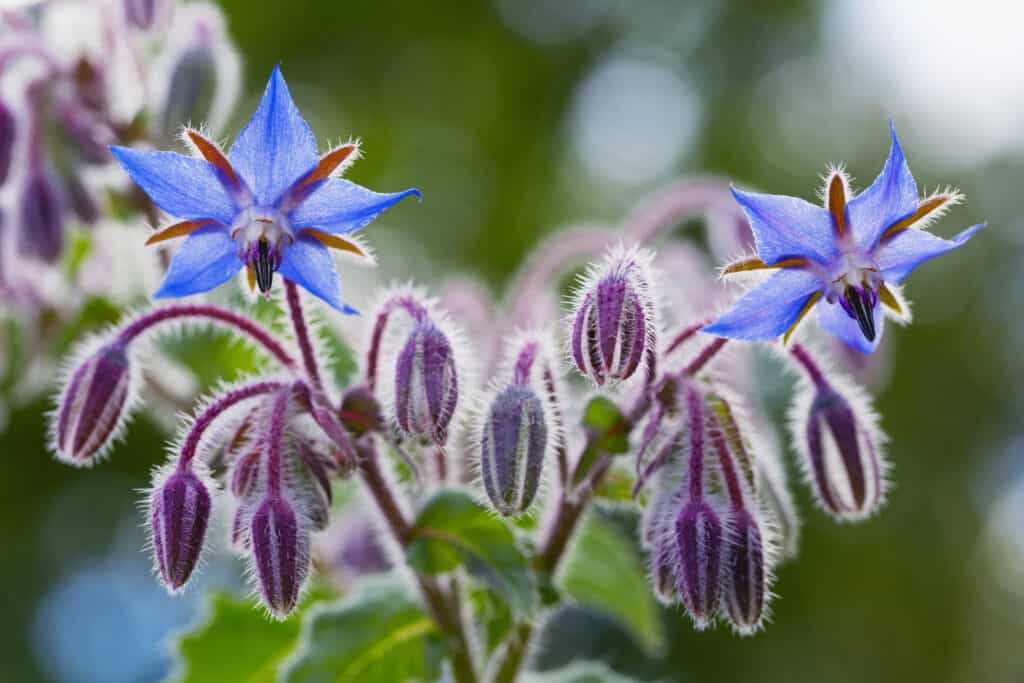
Borage flowers grow well in nearly any environment, including areas with partial shade.
©matteo sani/Shutterstock.com
4. Chervil
A popular herb in French cooking is chervil (Anthriscus cerefolium), which is why it is also known as French parsley. Its leaves and flowers have a delicious flavor that tastes similar to a mild licorice. This herb prefers moist soil and will tolerate partial shade.
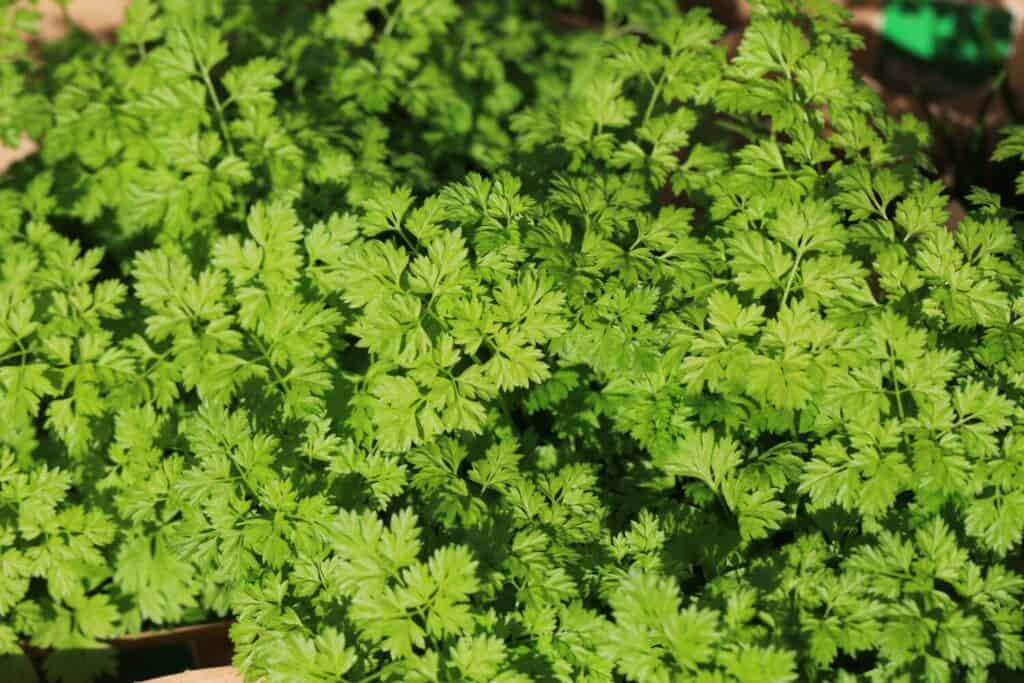
This lovely herb grows well in partial shade and is popular in French cooking.
©Traveller70/Shutterstock.com
5. Chives
This delicate herb looks a little like a cross between green onions and grass. It is smaller than green onions and has a more refined flavor. Chives (Allium schoenoprasum) are a popular garnish or addition to many culinary applications. Their use in traditional culinary and medical applications goes back over 4,000 years. Chives also produce lovely (and delicious) flowers. This herb will survive in partial shade if necessary.
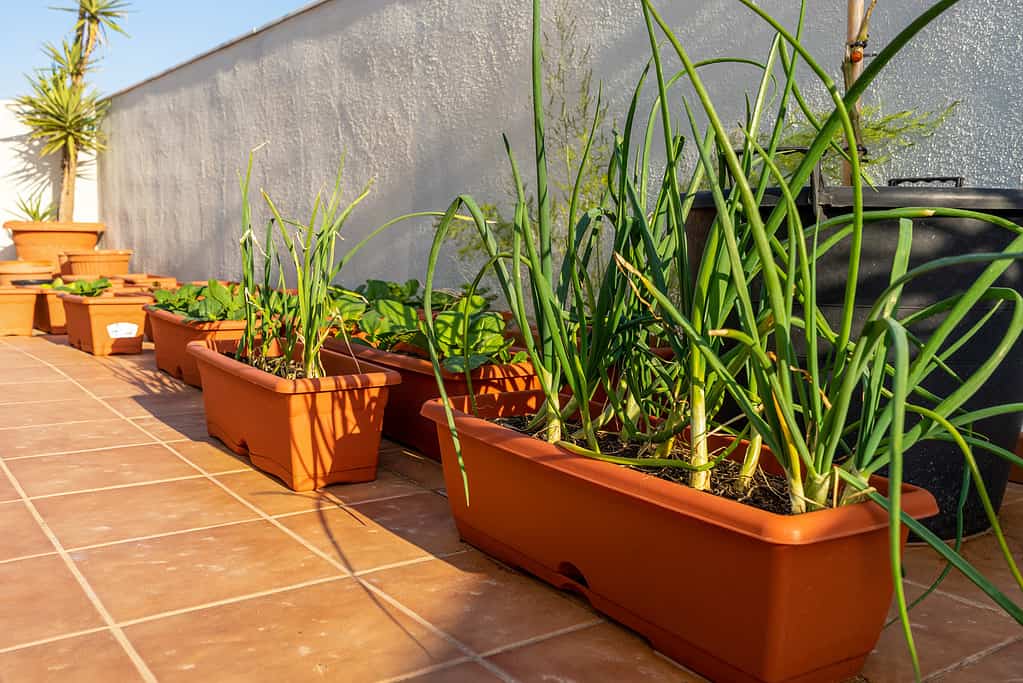
Chives are a popular garnish or addition to many culinary applications.
©andres barrionuevo lopez/Shutterstock.com
6. Cilantro
Though cilantro (Coriandrum sativum) isn’t technically considered a cold-weather plant, it will bolt rapidly in the heat. That is why growing this herb in partially shaded conditions is ideal. However, once that environmental location gets taken care of, this herb is remarkably easy to grow.
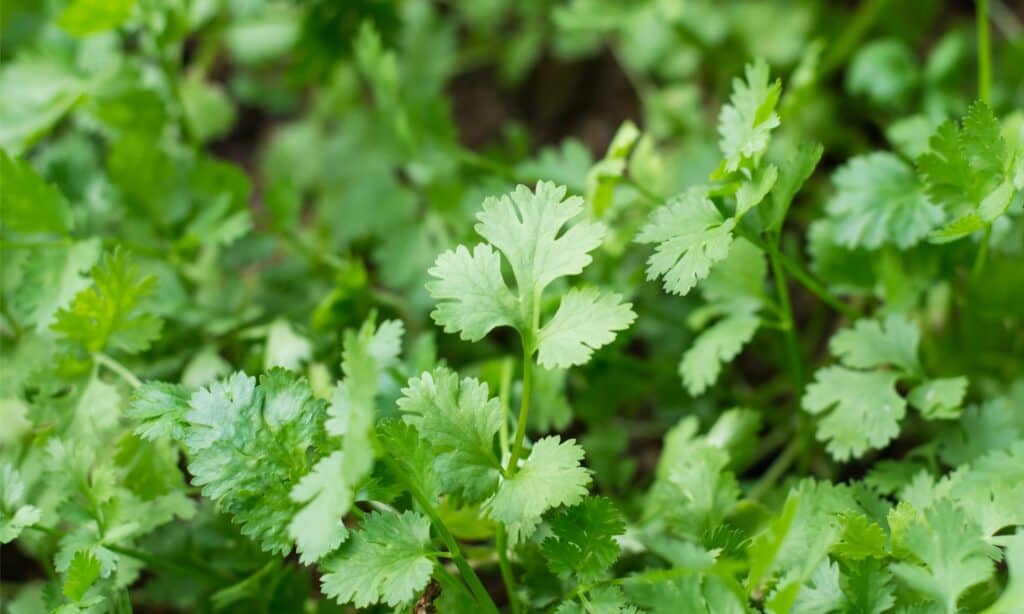
Cilantro does best in partial shade since it tends to bolt in the heat.
©iStock.com/Tevarak
7. Corsican Mint
Corsican mint (Mentha requienii) makes a fantastic ground cover. It is a member of the Lamiaceae (mint) family. However, it only reaches approximately 1/4 foot tall! This flavorful herb likes full sun to partial shade and only needs moderate water.
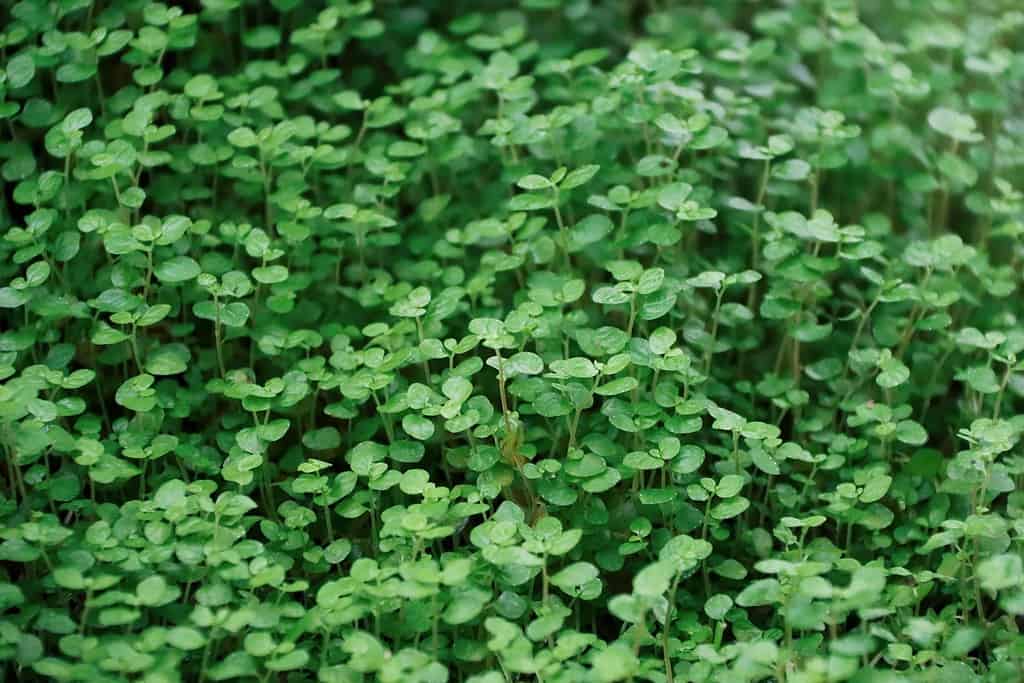
Corsican mint grows small and round green leaves. It thrives in full sun or partial shade.
©Michaela Pilch/Shutterstock.com
8. Dandelion
Most people think of dandelions (Taraxacum officinale) as weeds. However, this often invasive plant is highly useful. It makes a fantastic addition to many dishes and has a long history of medicinal applications.
This herb is highly nutritious, and all parts are edible. Plus, these flowers grow in nearly any environment, including partially shaded areas.

Dandelions are highly nutritious, and all parts are edible.
©Wirestock/iStock via Getty Images
9. Dill
One annual you may consider adding to your herb garden is dill (Anethum graveolens). This easy-to-grow herb is beginner-friendly and highly nutritious. It will also grow in many environments, including partial shade. And it is a must-plant if you plan on making your own pickles!
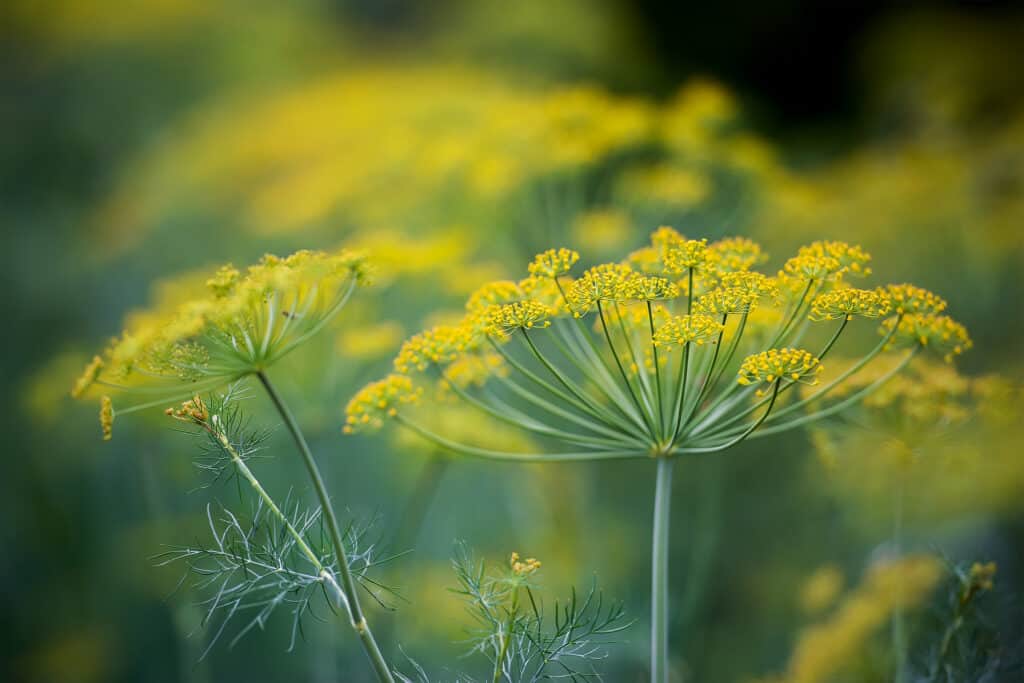
Planting dill in shaded areas will help keep it from bolting during the hottest months and ensure you have an ample supply of homemade pickles!
©PaniYani/Shutterstock.com
10. Golden Oregano
Unlike its cousins, golden oregano (Origanum vulgare ‘Aureum’) doesn’t actually like the sun. Too much direct sunlight can damage its delicate leaves. This herb belongs to the Lamiaceae (mint) family and thrives in moderate soil and partial shade. It is also deer and drought-tolerant, making it a great addition to any garden.
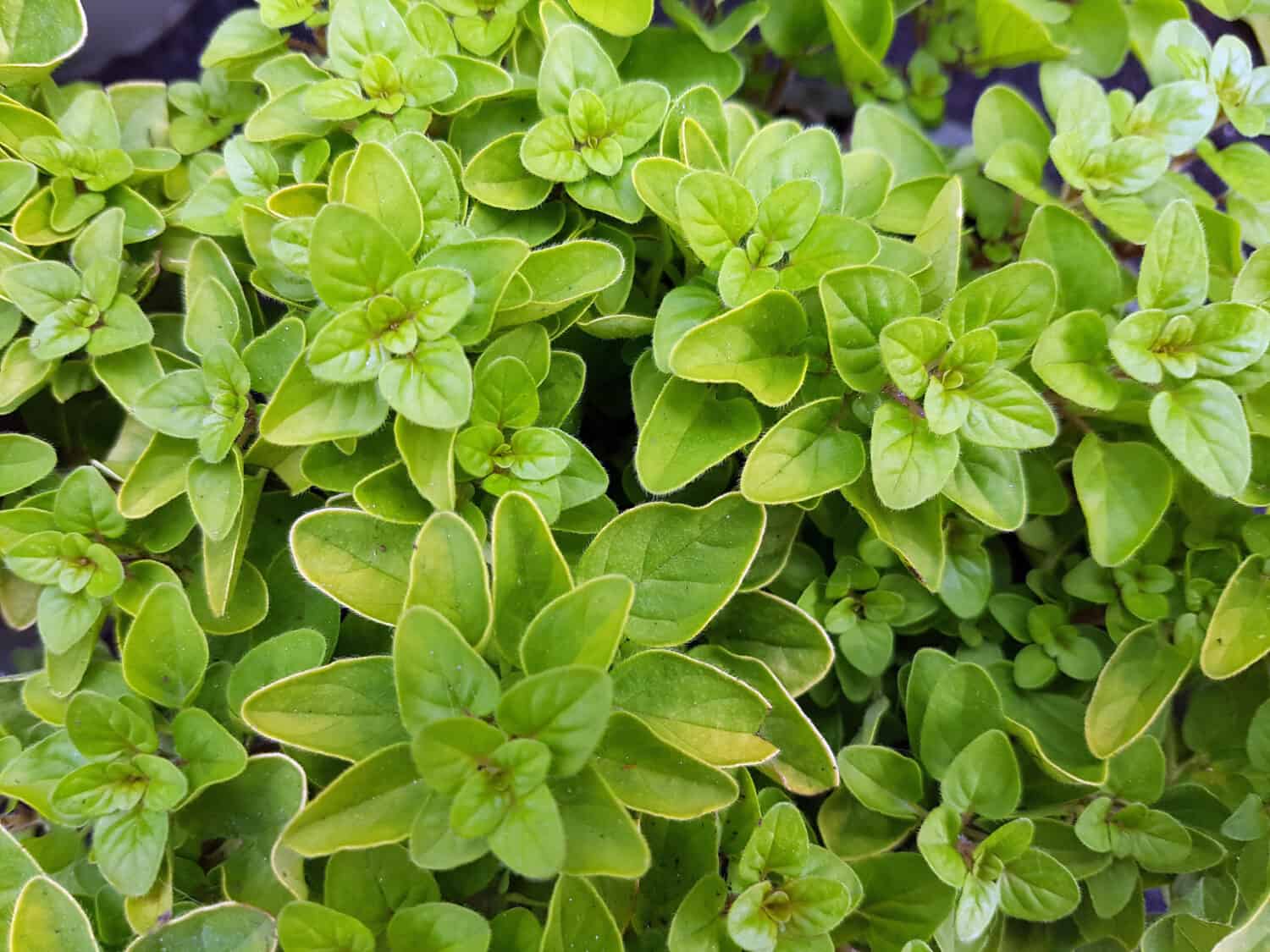
Golden oregano is one of the few varieties of this popular herb that prefers shade over sun.
©Manfred Ruckszio/Shutterstock.com
11. Goldenseal
Goldenseal (Hydrastis canadensis) grows abundantly in parts of North America. However, thanks to its ever-increasing popularity in the traditional medicine spheres, goldenseal is now at risk in other areas. This perennial herb will thrive in partially shaded areas.
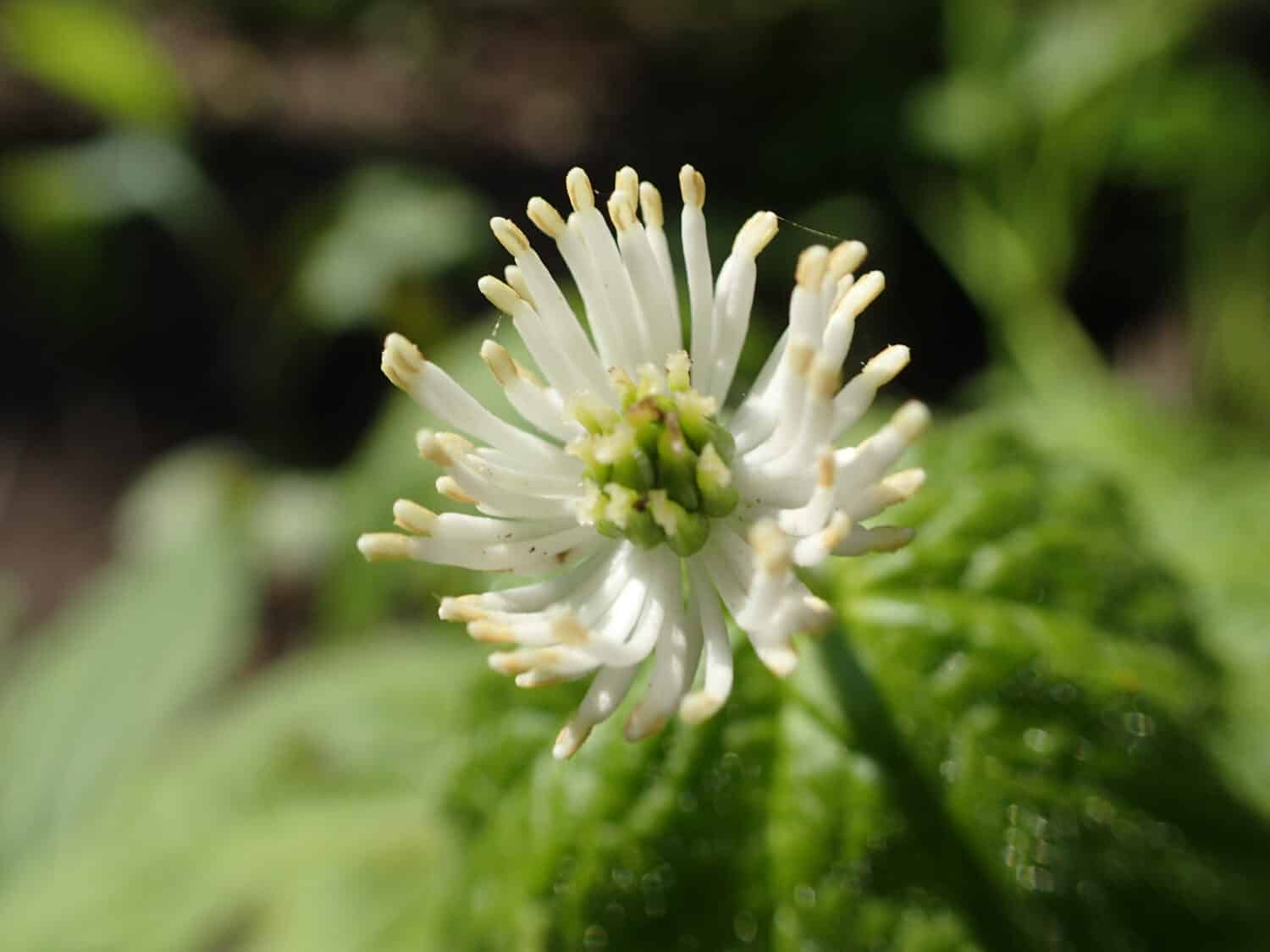
Goldenseal is a highly sought-after medicinal herb. While it grows well in some parts of North America, it is harder to find in others.
©Dan4Earth/Shutterstock.com
12. Lemon Balm
Lemon balm (Melissa officinalis) is a delightful herb with a citrusy and minty scent and flavor. This herb is well-known and highly studied for its traditional medicinal applications. It is a member of the mint family and only grows to about two feet tall. It requires well-draining, fertile soil and tolerates partial shade.
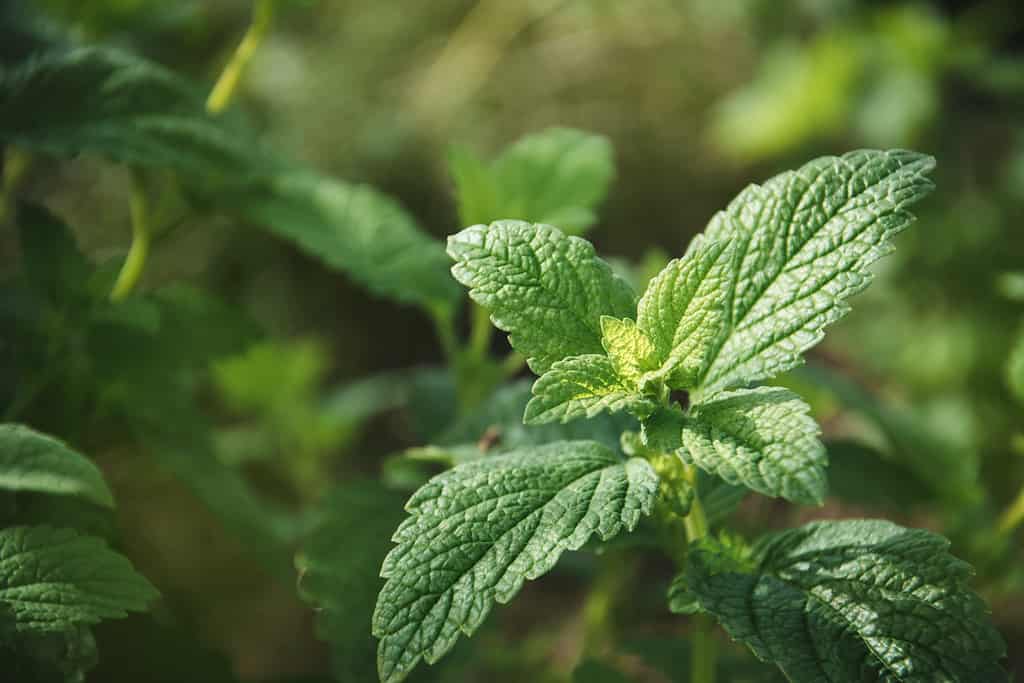
This delicious herb grows well in partially shaded areas.
©OliaMogdaleva/iStock / Getty Images Plus via Getty Images
13. Lemon Verbena
Lemon verbena (Aloysia citrodora) grows up to four feet tall and wide. It is native to Argentina and is a delicious herb. This low-maintenance plant will tolerate partial shade and moderate soil.
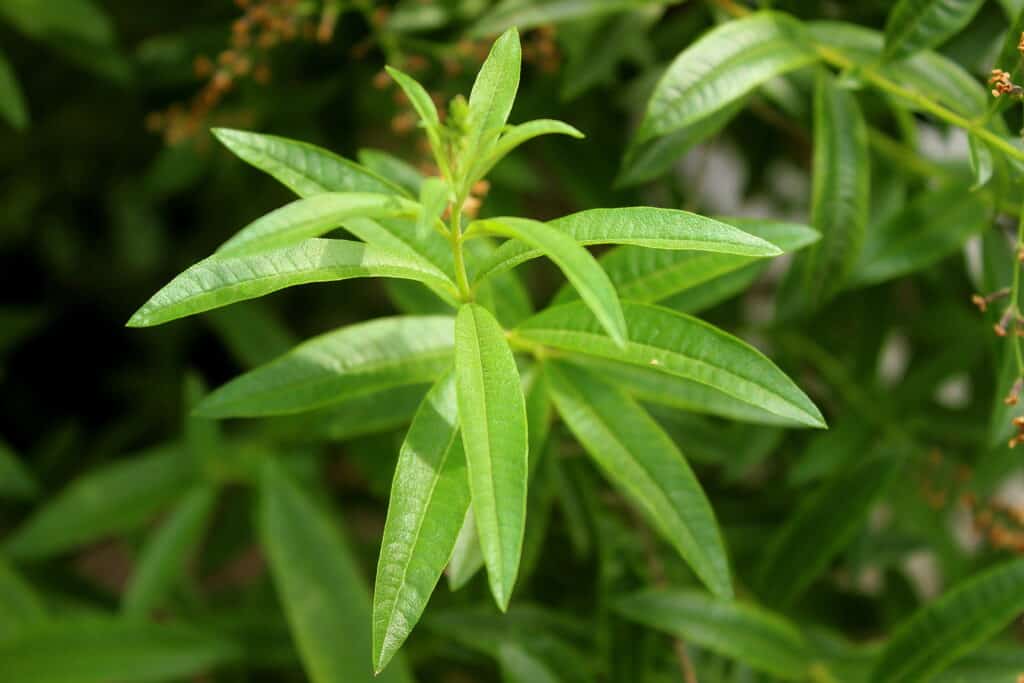
Add this beginner-friendly herb that doesn’t mind some shade to your garden.
©Sander Steven Lang/Shutterstock.com
14. Lovage
Lovage (Levisticum officinale) has a flavor reminiscent of celery, and many people love it. All parts of the plant are edible, and its lemony flavor makes a fantastic addition to many dishes. It will grow well in partial shade but is a relatively high-maintenance plant.
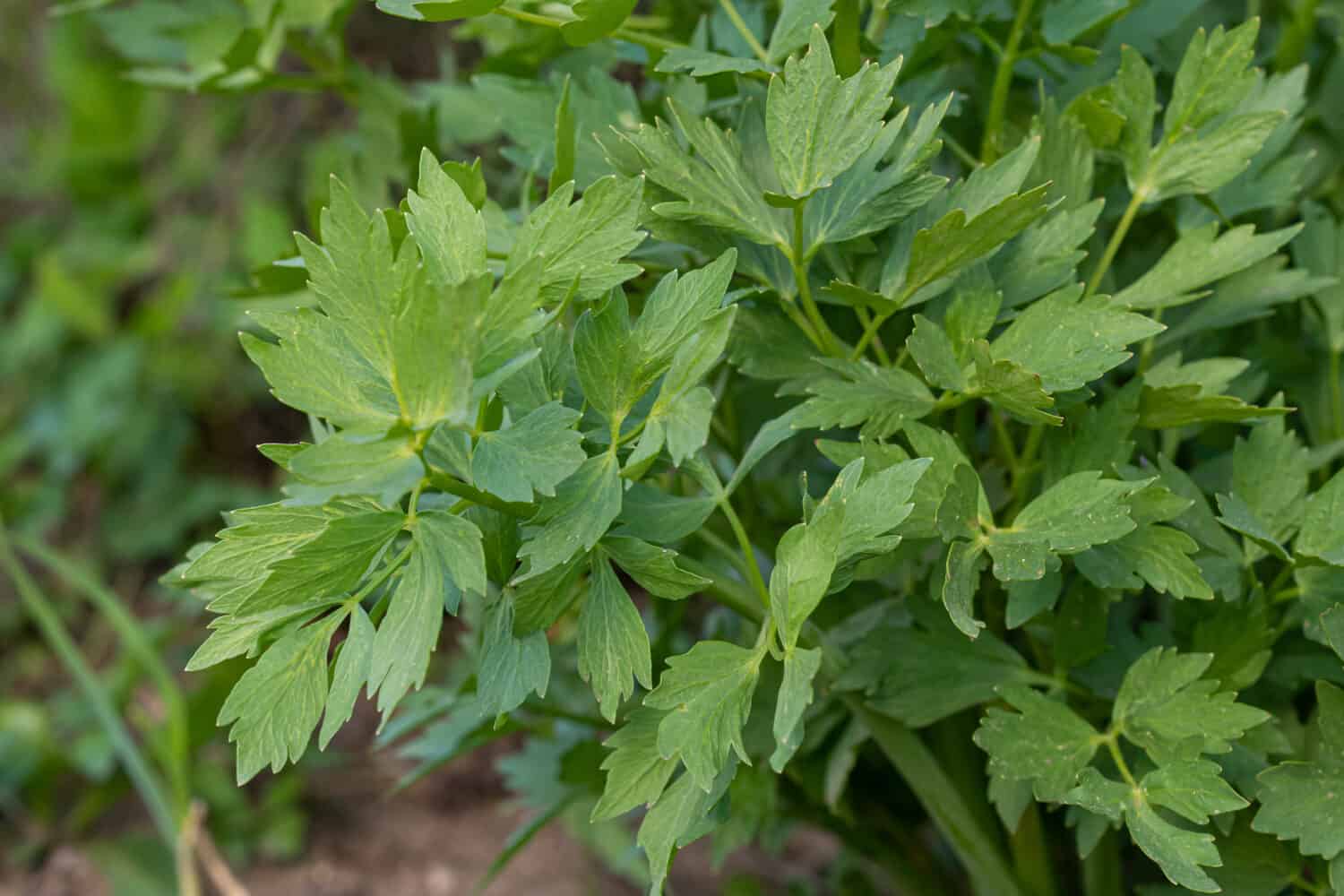
Plant some lovage for a truly unique pop of flavor.
©Lubos Chlubny/Shutterstock.com
15. Meadowsweet
This popular flower is also an herb! Meadowsweet (Filipendula ulmaria) is incredibly popular in traditional herbal medicine. And for good reason. Its flowers and leaves make remarkably good tea. It is a member of the Rosaceae (rose) family and grows up to six feet tall and three feet wide. Meadowsweet loves moist soil and partial shade. However, consult with your local extension office before planting some since several states consider it an invasive species.

Meadowsweet is incredibly popular in traditional herbal medicine.
©SHARKY PHOTOGRAPHY/Shutterstock.com
16. Mint
There are endless varieties of mint (Mentha) available on the market. The trick is to find the ones that you like and will use. Most species will grow well in locations with partial shade.
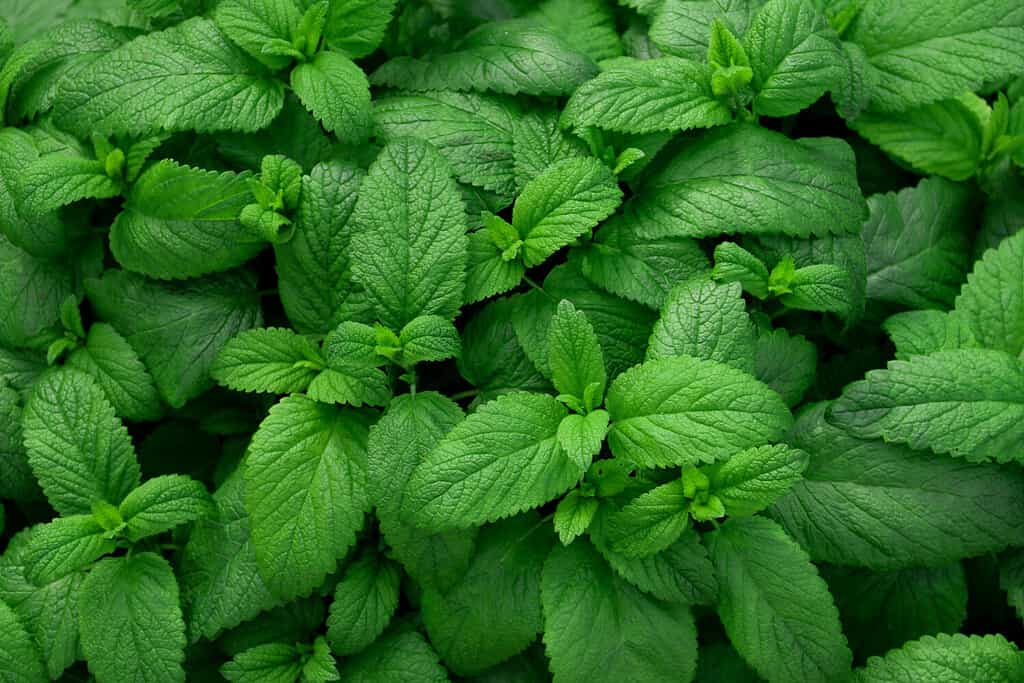
Mint will thrive in nearly any environment, including partially shaded areas.
©Olesya Myzzz/Shutterstock.com
17. Parsley
A member of the carrot family is parsley (Petroselinum crispum), which often gets used as a garnish. However, it is a flavorful and potent herb. This herb is rich in essential nutrients but notoriously challenging to grow. Plant your parsley as soon as possible to give it the best chance of success. It will survive in spots that only get partial shade.
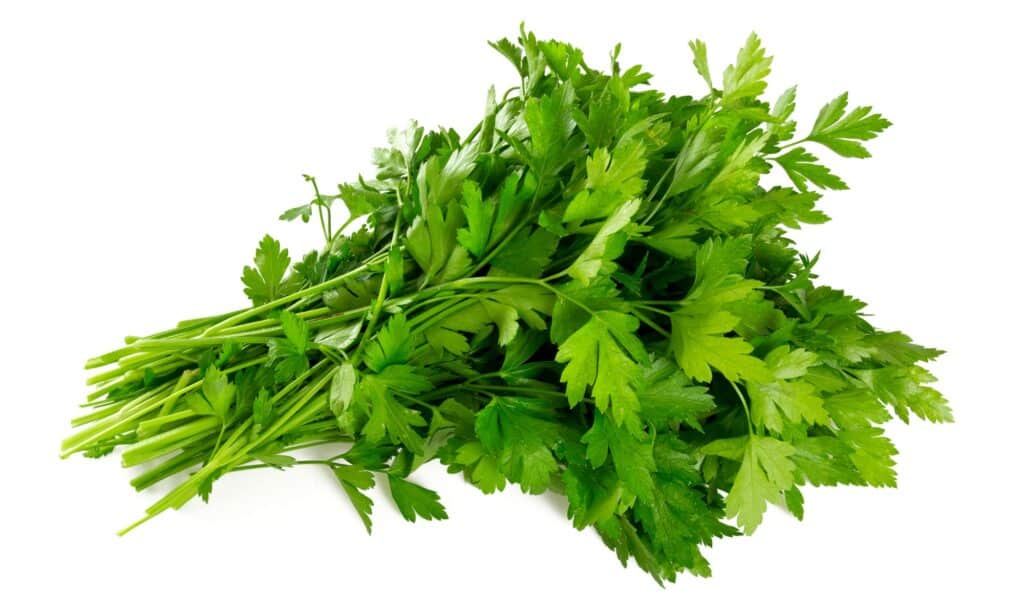
This herb is highly nutritious and thrives in partially shaded environments.
©iStock.com/Diana Taliun
18. Red Perilla
This herb is most commonly known as shiso (Perilla frutescens var. crispa). It has a unique and intricate flavor reminiscent of anise or cinnamon (depending on the variety). Red perilla is a member of the mint family that enjoys partial shade. This edible plant can easily reach three feet tall when left to its own devices.

Red perilla can get used in many different culinary treats.
©aomas/Shutterstock.com
19. Stinging Nettle
You have likely encountered stinging nettle (Urtica dioica), which tends to leave a red and unhappy mark on unsuspecting skin. But, this herb is very common in traditional medicine and has many medicinal and culinary applications. It likes full sun to partial shade and moist, well-draining soil.

Stinging nettles are a common herb that grows well in partial shade.
©iStock.com/Dmitri Zelenevski
20. Sorrel
Leaves from this flavorful herb are ideal for culinary applications and fresh eating in salads. Young sorrel (Rumex acetosa) have the most flavor. However, this herb’s lemony flavor profile is tasty and potent at any stage.
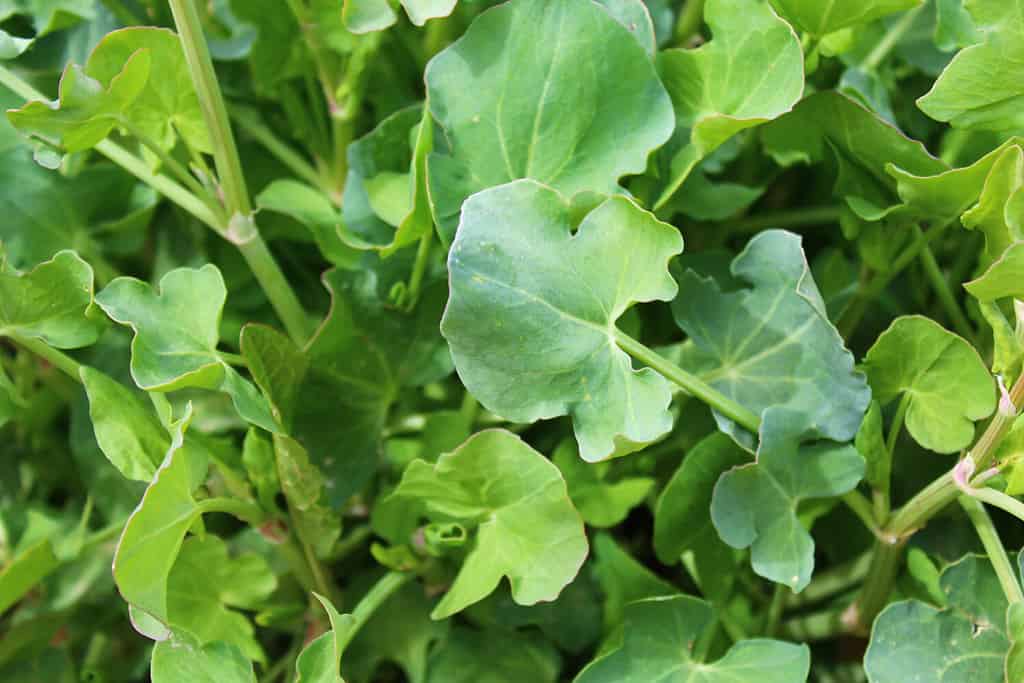
Young sorrel are ideal for culinary applications and fresh eating in salads.
©Martina Unbehauen/Shutterstock.com
21. Spicebush
Meet a likely unfamiliar North American herb — Spicebush (Lindera benzoin). While, technically, this plant is considered a shrub, its edible leaves are used in herbal preparations. It prefers partial sun to full shade and moist, well-draining soils.
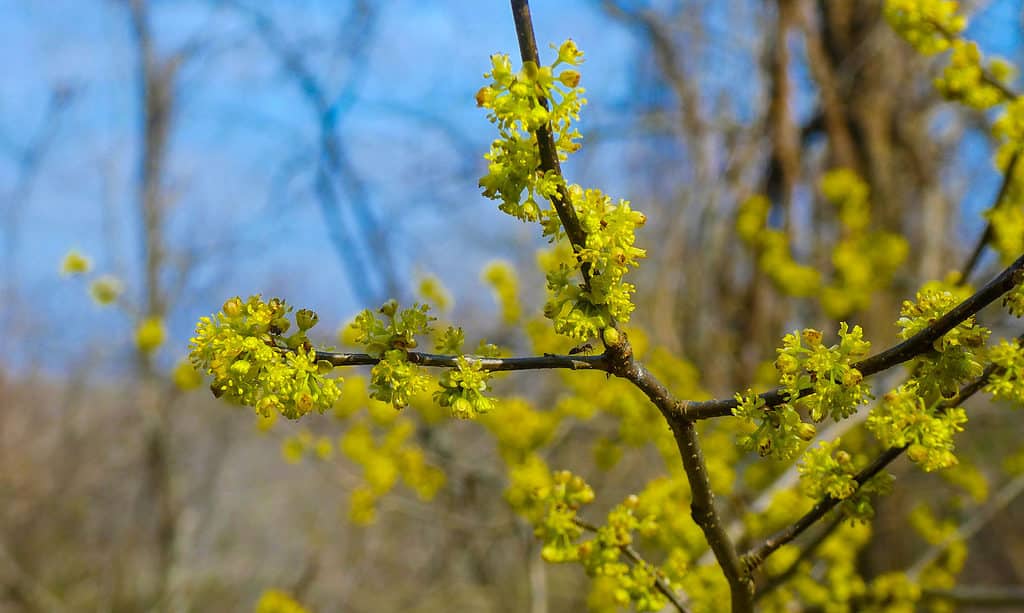
While technically Spicebush is considered a shrub, its edible leaves are used in herbal preparations.
©ForestSeasons/Shutterstock.com
22. Sweet Cicely
This unique herb is entirely edible, with a flavor that is reminiscent of anise and celery. It grows up to four feet tall and wide and prefers partial to full shade. Sweet cicely (Myrrhis odorata) used to be a common addition to herb gardens thanks to its medicinal properties. However, over the years, it somehow fell out of favor and is a rare herbal treat.
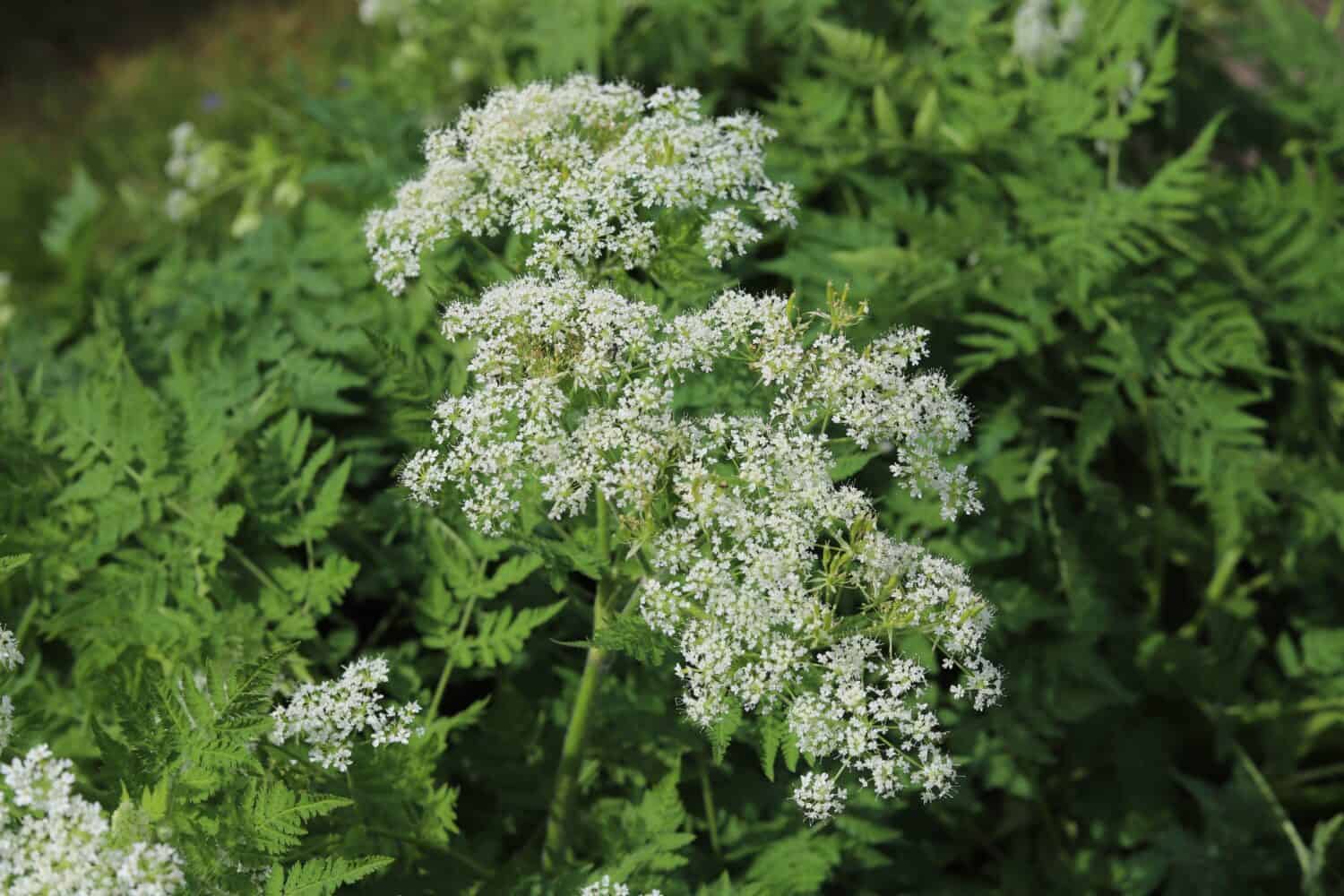
Sweet cicely used to play a key role in herb gardens.
©Kabar/Shutterstock.com
23. Sweet Grass
This member of the grass family grows up to 20 inches tall. Sweet grass (Hierochloe odorata). This perennial herb requires a lot of water and full sun to partial shade. While its watering requirements require extra time and attention, it is worth it. This herb attracts lots of birds. It also has a long-standing history in Native American medicinal applications.
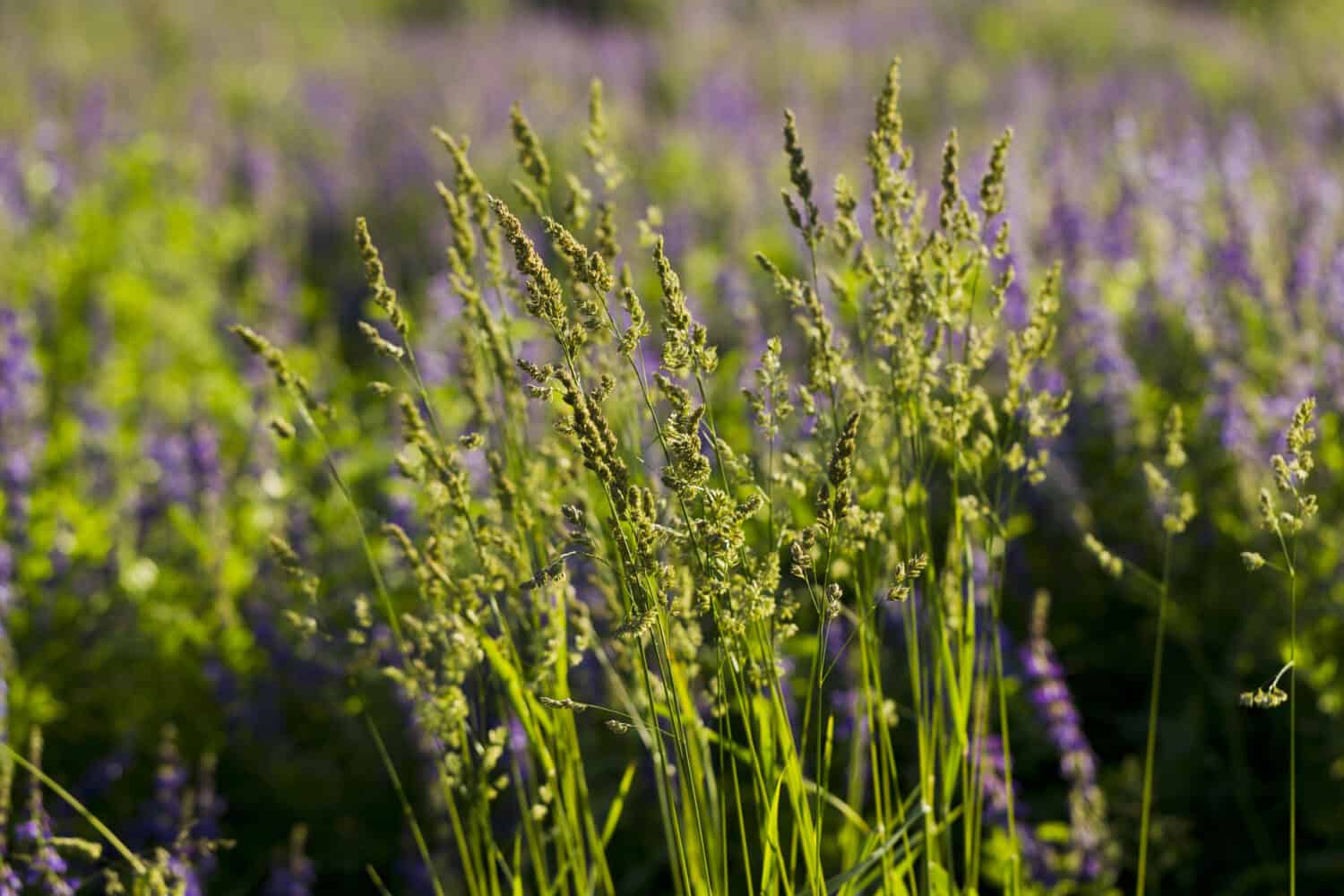
Sweet grass has a long, storied history and grows well in a variety of conditions.
©Oleg Shakirov/Shutterstock.com
24. Sweet Woodruff
Sweet woodruff (Galium odoratum) makes a phenomenal ground cover and delicious herb. This coffee family member grows up to two feet long and twelve inches tall. It is an edible perennial that thrives in moist, well-draining soil in locations that receive full to partial shade.

Did you know that sweet woodruff makes a phenomenal ground cover and delicious herb?
©ESB Basic/Shutterstock.com
25. Tarragon
When it comes to traditional culinary herbs, tarragon (Artemisia dracunculus) holds a prominent place. It is native to Asia and Europe and grows much larger than most people expect. Tarragon can reach up to three feet tall! It is a member of the Asteraceae (daisy) family. This herb can tolerate minimal water and partial shade.
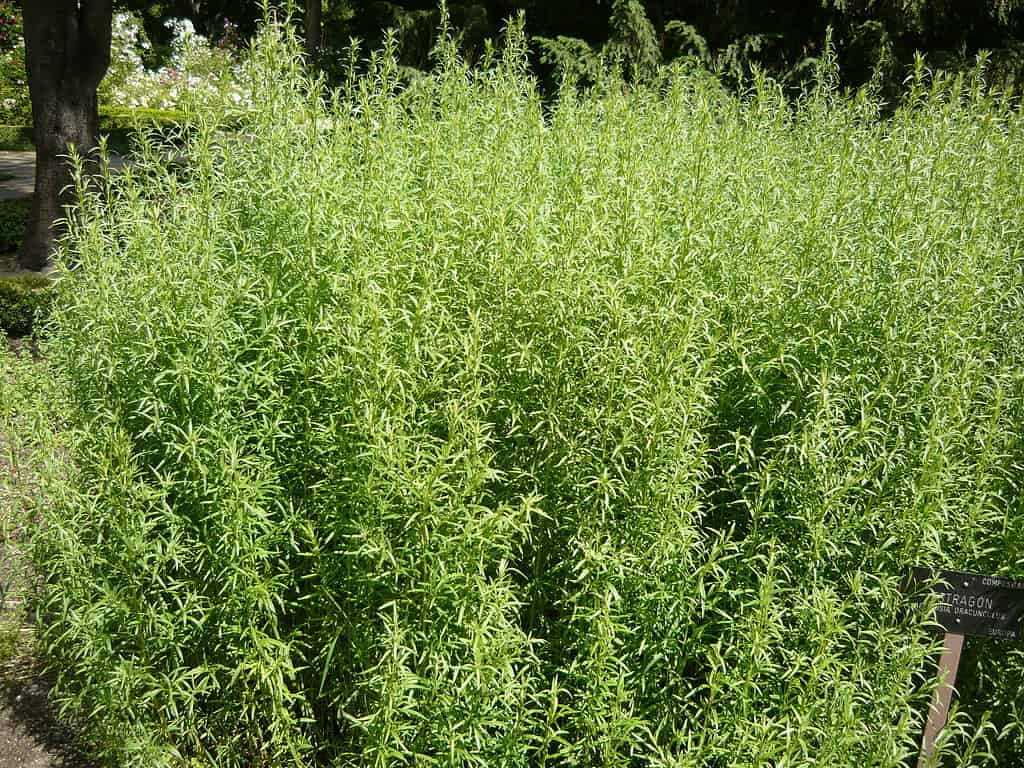
Tarragon can reach up to three feet tall!
©Cillas / CC BY-SA 4.0, via Wikimedia Commons – License
26. Thyme
Another staple in the kitchen is thyme (Thymus vulgaris). It is also easy to see why. This aromatic and flavorful herb has a long-standing history, reaching back before Medieval times. It is a member of the Lamiaceae (mint) family. Thyme prefers well-draining soil and full sun, though it will tolerate partial shade.

Thyme will tolerate some shade in case you need to plant it in a less than sunny spot.
©pilialoha/Shutterstock.com
27. Wasabi
Growing wasabi (Eutrema japonicum) isn’t easy, nor is it for everyone. This notoriously difficult plant grows best in warmer climates, like USDA Hardiness Zones 8 to 10. It prefers wetter environments and loose, well-draining soil. This highly nutritious plant can even thrive in deep shade. So, it is well worth the effort it takes to grow it.
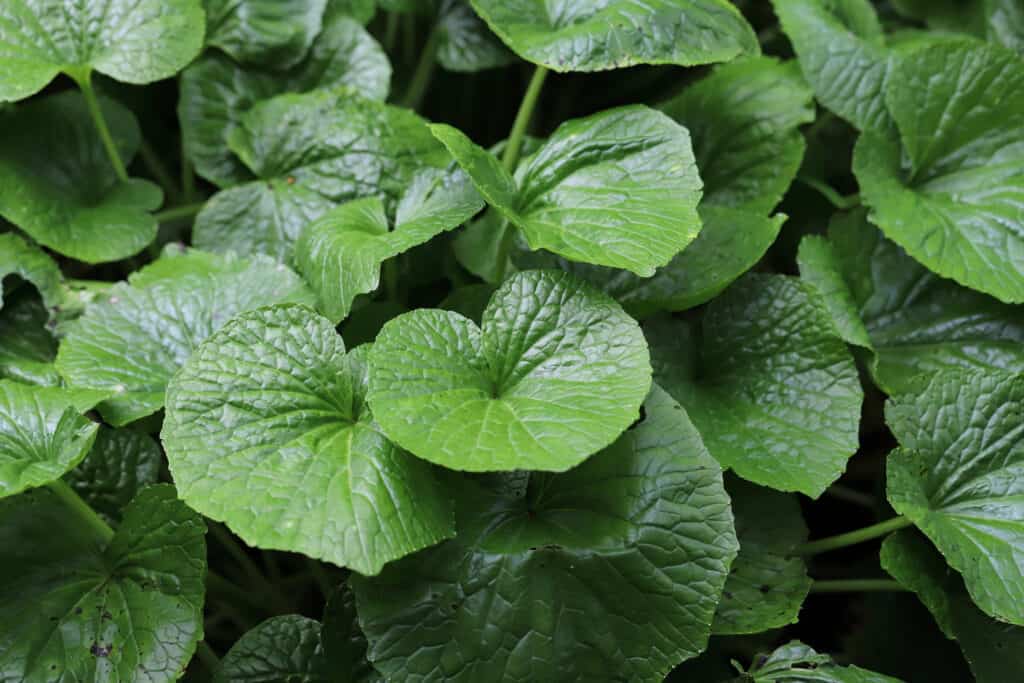
Wasabi favors growing conditions that restrict its wide cultivation. This location is Izu Peninsula in Shizuoka Prefecture in Japan.
©iStock.com/Queserasera99
28. Wild Bergamot
You may know wild bergamot (Monarda fistulosa) for its spectacular blossoms. However, this gorgeous flower is also a popular herbal remedy and tea! This lovely perennial flower grows up to five feet tall and has highly aromatic foliage. It will tolerate moist or dry conditions and full sun to partial shade.
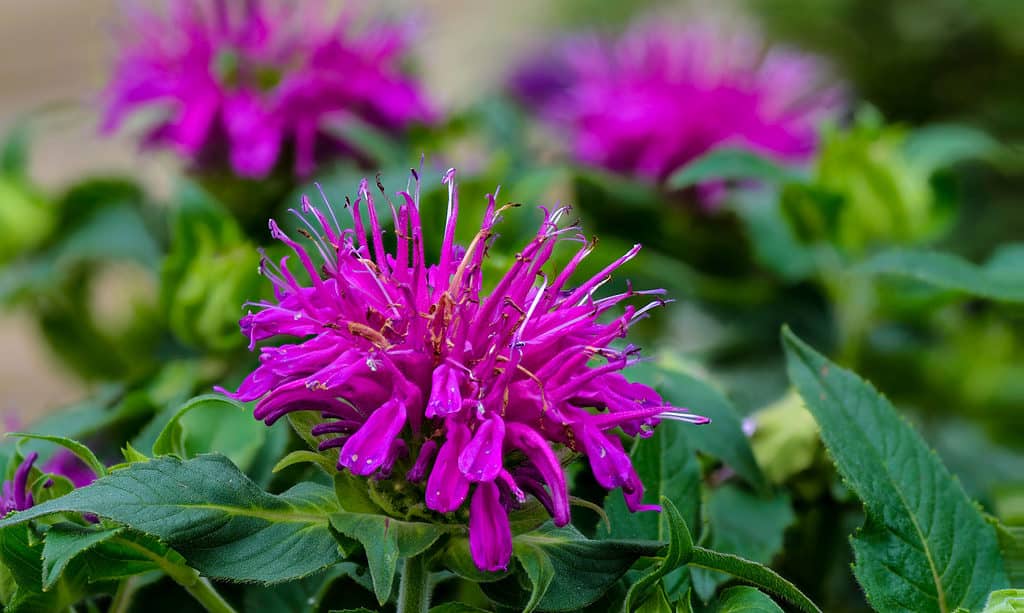
This gorgeous flower is also an herb and it thrives in partial shade.
©damann/Shutterstock.com
29. Wild Ginger
If you are looking for an edible ground cover, look no further than wild ginger (Asarum canadense). This flavorful herb only reaches eight inches tall but produces magnificent heart-shaped leaves. It thrives in partial to full shade and moist soil.
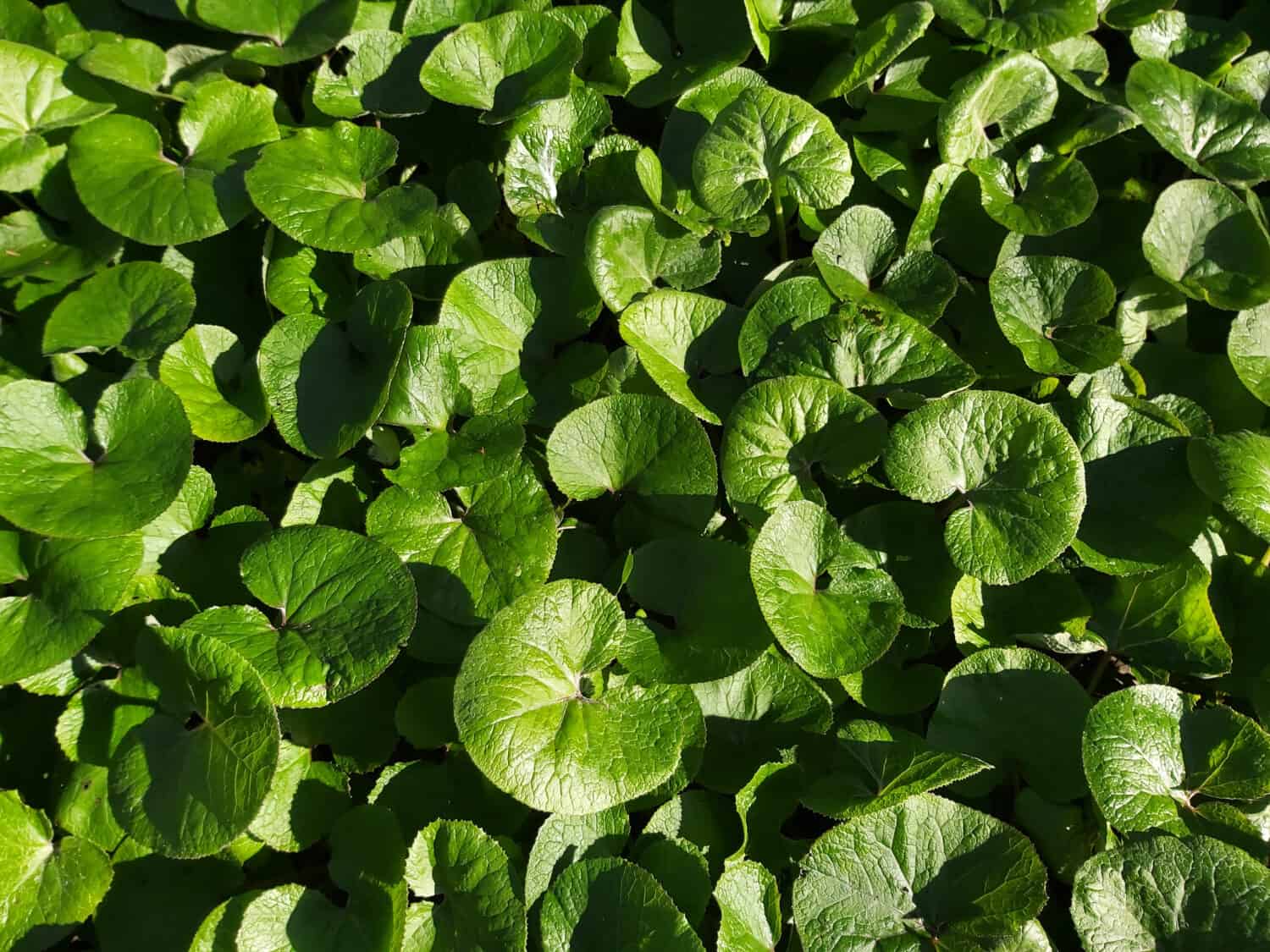
Wild ginger makes an excellent addition to any herb garden.
©Gabriela Beres/Shutterstock.com
Summary of 30 Herbs That Grow and Thrive in the Shade
| Number | Herb | Type of Shade |
|---|---|---|
| 1 | Angelica | Partial shade |
| 2 | Bay | Partial shade |
| 3 | Borage | Partial Shade |
| 4 | Chervil | Partial shade |
| 5 | Chives | Partial shade |
| 6 | Cilantro | Partial shade |
| 7 | Corsican Mint | Partial shade |
| 8 | Dandelion | Partial shade |
| 9 | Dill | Partial shade |
| 10 | Golden Oregano | Partial shade |
| 11 | Goldenseal | Partial shade |
| 12 | Lemon Balm | Partial shade |
| 13 | Lemon Verbena | Partial shade |
| 14 | Lovage | Partial shade |
| 15 | Meadowsweet | Partial shade |
| 16 | Mint | Partial shade |
| 17 | Parsley | Partial shade |
| 18 | Red Perilla | Partial shade |
| 19 | Stinging Nettle | Partial shade |
| 20 | Sorrel | Partial shade |
| 21 | Spicebush | Partial to full shade |
| 22 | Sweet Cicely | Partial to full shade |
| 23 | Sweet Grass | Partial shade |
| 24 | Sweet Woodruff | Partial to full shade |
| 25 | Taragon | Partial shade |
| 26 | Thyme | Partial shade |
| 27 | Wasabi | Partial to deep shade |
| 28 | Wild Bergamot | Partial shade |
| 29 | Wild Ginger | Partial to full shade |
The photo featured at the top of this post is © Olesya Myzzz/Shutterstock.com
Thank you for reading! Have some feedback for us? Contact the AZ Animals editorial team.






